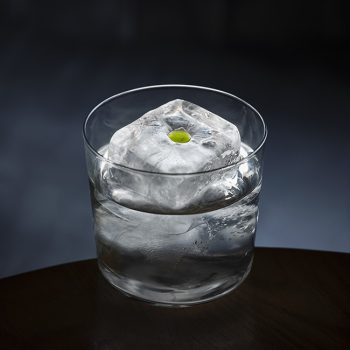From pitchers to punch bowls: why cocktails are better shared
When socialising with friends, shared drinks such as Punch, which can be doled out at the table, fit the bill. Here is how the style is growing in popularity and evolving.

*This feature was originally published in the April 2024 issue of The Spirits Business magazine.
Food or drinks: something changes in the way we socialise when the offerings on the table are shared. Small plates or tapas-style meals create a wholly different dining experience than individually served mains for one. And drinks are no different.
For centuries, sharing cocktails have marked heightened celebrations among friends and family. Punch is a globally enjoyed sharing option, but it remains unknown who made the first one. In his book Punch, author David Wondrich explains that the first recorded recipe can be traced back to 1638, when Johan Albert de Mandelslo, a German working in Surat, India, recorded the workers made “a kind of drink consisting of aqua vitae, rose-water, juice of citrons and sugar”.

In London, the Punch Room at The London Edition hotel has become an institution for the classic sharing cocktail. “Punch Room London was the first in the brand to dedicate the offering to Punch serves, and now has eight locations across the globe,” bar manager Anthony Callegari says. “We have seen more bars using the sharing concept to boost sales and to help with the speed of service. Our guests love to order a Punch bowl to share with friends or colleagues for the enjoyment of a shared experience.”
Light and shadows
The bar’s latest menu, Lights, is divided into three chapters: Opaque, Translucent, and Transparent, each inspired by light and the effect it has on objects. Chapter 1: Translucent features cocktails made with modern mixology techniques, embracing edible paint, LED lights, and colour-changing elements. Chapter 2: Transparent explores clear or clarified ingredients. The final instalment, Chapter 3: Opaque plays with different glassware, textures and reactions to light and shadows.
“The menu takes its literal understanding of light and reflects on how it affects everything we do and how we perceive something new,” Callegari adds. “So our guests really enjoy how the look of the drinks in our menu aren’t ‘connected’ to how they taste. For example, the Halo of Smoke Punch, which combines Los Siete Misterios, Casamigos Blanco, Italicus, citrus mix, coriander, and jasmine tea, is a crystal-clear drink, which typically you would associate with a ‘tasteless’ flavour, but it encompasses very bold flavours of smoke, jasmine and bergamot.”
Added theatre
Theatrics play a leading role in consumers’ decisions to purchase sharing cocktails, too, agree Callegari and Lukas Kauffman, general manager of 28 HongKong Street. The Singaporean bar offers sharing Punch cocktails on a seasonal basis, which can be shared between eight guests.
“Our guests enjoy the theatrics of having a big Punch bowl served to their group of friends, often having it topped up with a bottle of bubbles right at their table,” says Kauffman. “It’s a great showpiece and adds to the overall experience. These Punch bowls are ideal for celebrating special occasions, sharing the moment, and having fun together. It’s great to top up each other’s Punch glasses and interact with each other and the cocktail in a personal way, and brings a conviviality to the table beyond what you might get with single-serve cocktails.”

Sharing cocktails at London’s Viajante87 take their inspiration from Latin America. The late-night cocktail bar in Notting Hill relaunched in the latter part of 2023 under the guidance of Pietro Collina and Veronica Di Pietrantonio. The influence of the duo’s extensive travels through Latin America shines through their cocktail list – which includes two sharing options. The first is called the Agave Serve, and allows guests to choose between a 250ml or 500ml carafe of Tequila or mezcal to share throughout the night. It is served with house-made Sangrita and Verdita – traditional alcohol-free drinks served alongside agave spirits in Mexico – sliced fruit, chilli salt, guacamole and chips.
The second option is the Caipirinha Serve. The sharing option is available in a 500ml or one-litre carafe, and is customisable at the table, using tropical syrups and fresh fruit.
“The whole idea is to ‘be present’,” explains Collina. “At Viajante87, we’re always in a mode of transitioning from cocktail bar to late-night party atmosphere. Established events have a history of table service, but bottle service can be gauche and over the top. We’re looking at providing something for our guests to share with the people around them. The idea is we don’t serve; they need to serve each other. It’s like a bread basket on the table; it brings people together.”
In the moment
Di Pietrantonio says the Agave Serve, in particular, turns heads in the bar when ordered. “It’s really different,” she says. “You see a long tray with coloured things on it and a carafe that’s glass-blown. When you serve one, and you explain what it is, half the bar has it on their table. They also understand what we want to do, the encouragement to serve each other in the moment.”
Di Pietrantonio adds how it’s about creating an experience for guests, and bringing a sense of community that she and Collina experienced so warmly on their travels.
“It’s time, in my opinion, to have simpler drinks and more conversations,” she says. “We don’t over-complicate things we serve, but open up conversations, giving space for guests to ask what an ingredient is, rather than saying ‘this is made with 15 different things’. And sharing elements are a great way to spark that curious nature in guests.”
Related news
Disaronno grows in UK on-trade
